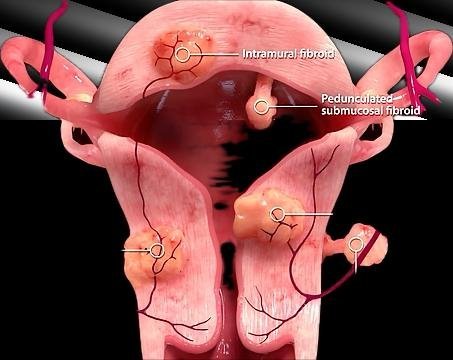Uterine Fibroid Embolization (UFE)
- Home
- Uterine Fibroid Embolization
UFE
Uterine Fibroid Embolization
Uterine Fibroid Embolization (UFE) is a minimally invasive procedure designed to treat uterine fibroids, which are non-cancerous growths in the uterus that can cause significant symptoms such as heavy menstrual bleeding, pelvic pain, and frequent urination. UFE offers an alternative to traditional surgical methods by reducing the blood supply to the fibroids, thereby shrinking them and relieving symptoms.

Minimally Invasive Procedure
UFE is performed through a small puncture in the skin, usually in the groin area, avoiding large incisions and general anesthesia.
Advanced Imaging Guidance
An interventional radiologist uses imaging techniques to guide a catheter to the uterus, where tiny particles are injected to block blood flow to the fibroids, reducing their size.
Lower Risk of Complications
The procedure has a reduced risk of infections, excessive bleeding, and other complications compared to traditional surgeries like hysterectomy or myomectomy.
Same-day discharge
Due to the minimally invasive nature of the procedure, most patients can go home on the same day as the procedure.
Minimal Pain
Most patients experience far lower pain levels after the procedure compared to traditional surgery; reducing the need of opioids and other sedating pain medications.
Faster Recovery
Most patients experience symptom relief within days to weeks and return to normal activities within a few days after the procedure.
Ideal for Non-Surgical Candidates
UFE is a good option for patients who may not be candidates for surgery due to other health conditions.
High Patient Satisfaction
Due to the procedure's efficacy and minimal side effects, patients generally report a high level of satisfaction.
Preservation of Fertility
UFE has a lower risk of affecting future fertility compared to surgical options, making it an attractive choice for women wishing to preserve their ability to have children.
Improves Quality of Life
UFE offers a safe, effective, and less invasive alternative for treating uterine fibroids, significantly enhancing patients' quality of life.
Your Choice?
Is UFE the Right Option for You?
Deciding if UFE is the right option for you depends on several factors, including your symptoms, overall health, and future fertility plans.
Ultimately, the decision to undergo UFE should be made collaboratively between you and your healthcare provider, ensuring that it aligns with your health goals and lifestyle preferences. If you seek a minimally invasive, effective solution for uterine fibroids, UFE could be the right choice.
Effective for Symptomatic Fibroids
UFE is particularly effective for women with uterine fibroids, especially if traditional treatments have not provided relief or if surgery is not preferred.
Relief from Common Symptoms
UFE may be suitable if you experience heavy menstrual bleeding, pelvic pain, or pressure on the bladder or bowel.
Minimally Invasive for Complex Medical Cases
UFE is performed under local anesthesia, making it a good option for patients with other health conditions, such as cardiovascular issues, that increase risks with general anesthesia and major surgery.
Fertility Preservation
UFE offers a favorable option for women who want to avoid potential reproductive consequences associated with traditional surgeries, including reccurent miscarraiges and infertility.
Consultation with an Interventional Radiologist
An expert evaluation is necessary to determine your suitability for UFE, which includes reviewing your medical history, imaging studies, and discussing the benefits and risks of the procedure.
Factors to Consider
The size, number, and location of fibroids, as well as your overall health, will be assessed to ensure UFE is the best option for your condition.
Dr. Bhatia's Career
Dr. Bhatia’s Contributions to UFE Research & Education
Intraarterial Dexamethasone for Alleviation of Pain following Uterine Fibroid Embolization: A Double Blinded Randomized Controlled Trial. Co-Author. Society of Interventional Radiology Conference March 2024. Salt Lake City, UT.
Bhatia S. Role of Uterine Fibroid Embolization in the management of Uterine Fibroids. International Medical Congress June 2, 2010, Miami Beach, FL.
Uterine Fibroid Embolization – Updates Grand Rounds Presenter – Long Island Radiological Society, Nov 2017
